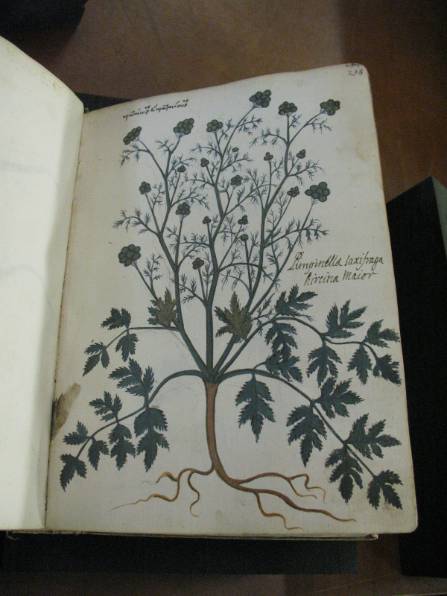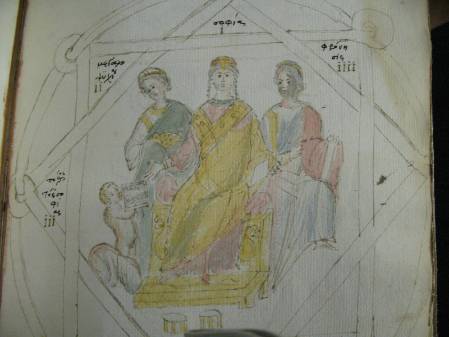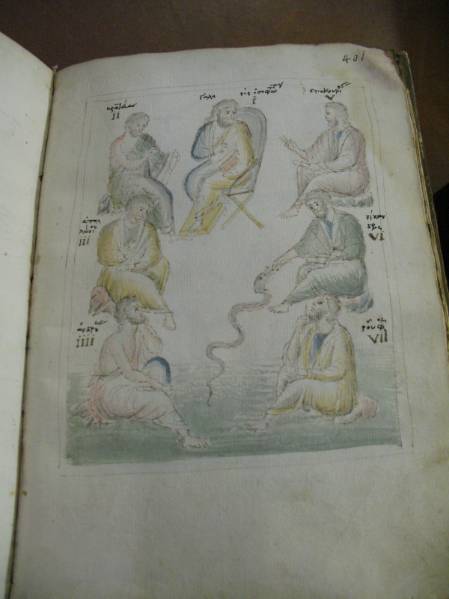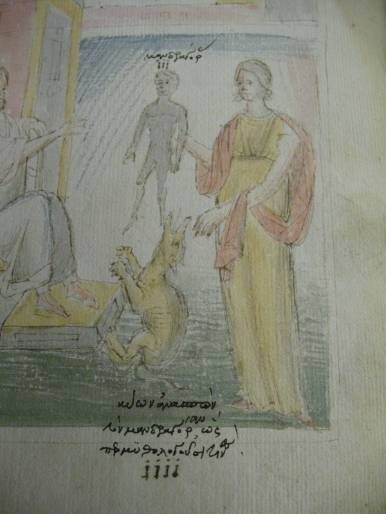A copy based on the Vienna Dioscorides - the earliest surviving illustrated herbal, held in the Austrian National Library, Vienna.
The earliest known herbals date back to early Greece and they have been in permanent use throughout the centuries into the medieval era and beyond. Herbals have predominately been used as texts to assist physicians and botanists in the use and application of remedial ointments and medicines and attempt to describe the medicinal properties of plants and their appearance.
Pedanius Dioscorides (circa 40CE-90CE)
Pedanius Dioscorides was born in Anazarbos (modern day Turkey) and lived in the time of the Emperor Nero in the 1st Century CE. He was a military man and physician. Painstakingly compiling information relating to 600 plants, 35 animal products and 90 minerals, he developed his medical treatise which was to become a cornerstone of European botany for two millennia.
Materia Medica
One bound manuscript volume of 418 hand-painted watercolour illustrations of Pedanius Dioscorides' Materia Medica. This volume belonged to Sir Joseph Banks (1743-1820), President of the Royal Society, and is now housed in the NHM Library. This item is a copy of the great Vienna Dioscorides – an elaborately illustrated herbal designed as a gift to the Byzantine Princess Juliana Anicia in the 6th Century CE, and sometimes known as the Juliana Anicia Codex. The Juliana Anicia Codex was based on the original ancient Greek text.
The Banks copy’s watermark dates the papers at 1458-1477. The drawings are arranged as in the Vienna Codex, in alphabetical order and are copies of the Vienna Dioscorides, which is vastly more ornate and luxuriously designed. Nevertheless, the Banks copy is an extremely important and rare volume of intrinsic value. The plant drawings are annotated with their Greek name at the top and in a later hand with their Latin name at the bottom of the page.
Bound at the back of the book are a number of sketches of animals and unfinished sketches of people. One unfinished sketch depicts the Princess Juliana Anicia.
Another sketch denotes seven men – renowned medical men of the time, seated in the Hellenistic tradition of philosophers in discussion. The men depicted are (clockwise); Galen, Dioscorides, Nicander, Rufus, Andreas, Apollonius and Crateuas.
There are a number of sketches of the mandrake root - being held up by a woman as a small grey figure. The mandrake plant had mystical significance for the ancient Greeks. Folklore describes how once dug up the mandrake root releases a terrible cry which will kill those who listen. However the mandrake also possesses mythical powers. One legend tells how a starved dog is tied to the partially dug up root and then when fully dug the shriek will kill the dog but spare the human, therefore leaving the human to capture the magical qualities of the plant.
These illustrations are a useful reminder of the transition from superstition and folklore to a more reasoned view of the world and are also symbolic of the development of a growing proto-scientific intelligence in relation to the natural world.
The library also holds other wonderful versions and editions of the Materia Medica.
References:
Collins, M. (2000) Medieval herbals: The illustrative traditions, London: The British Library and University of Toronto Press.
Osbaldeston, T. A. and Wood, R. P.A. (2000) Dioscorides, de materia medica : a new indexed version in modern English, Johannesberg: Ibidis Press.
By Natalie Bevan - Assistant Librarian







